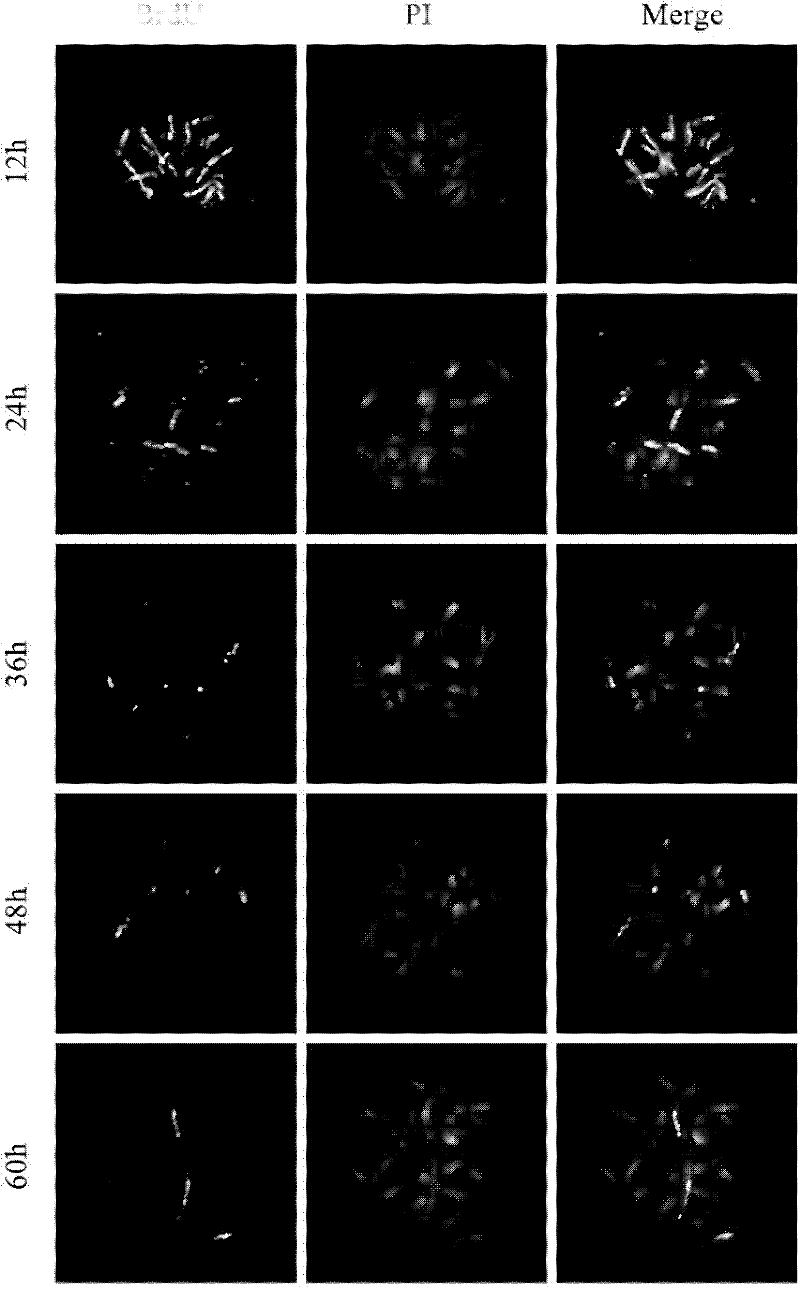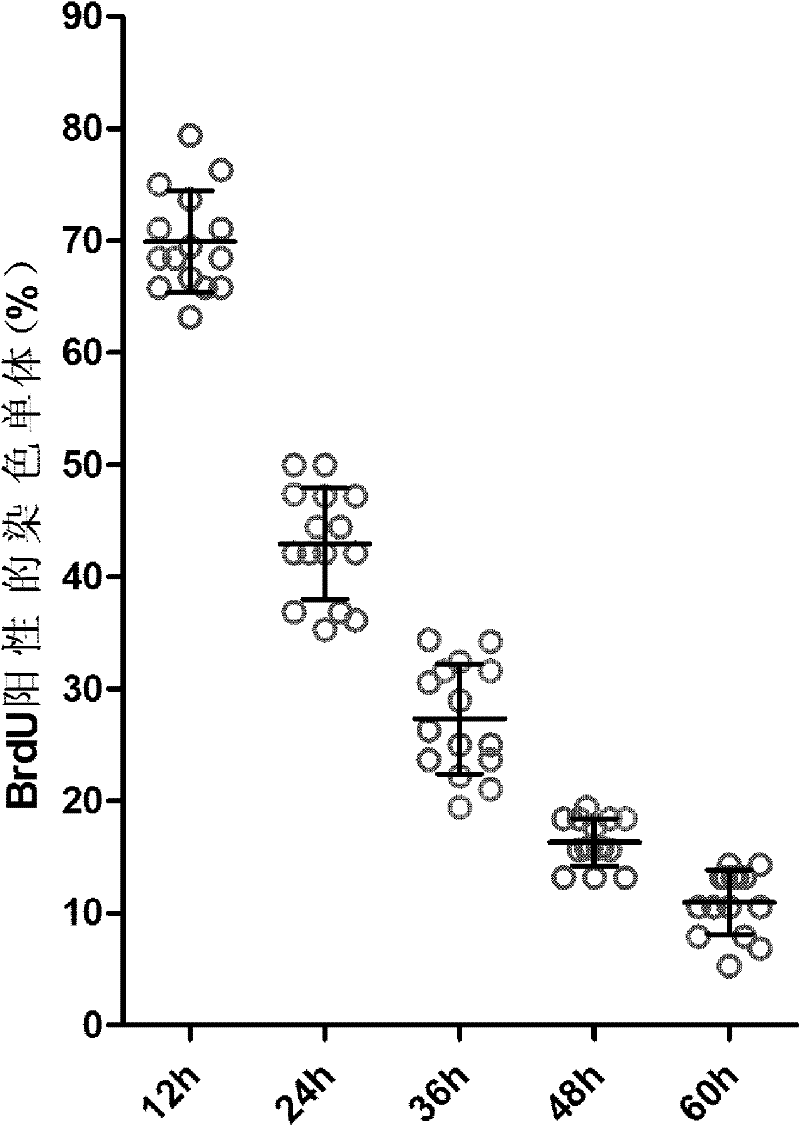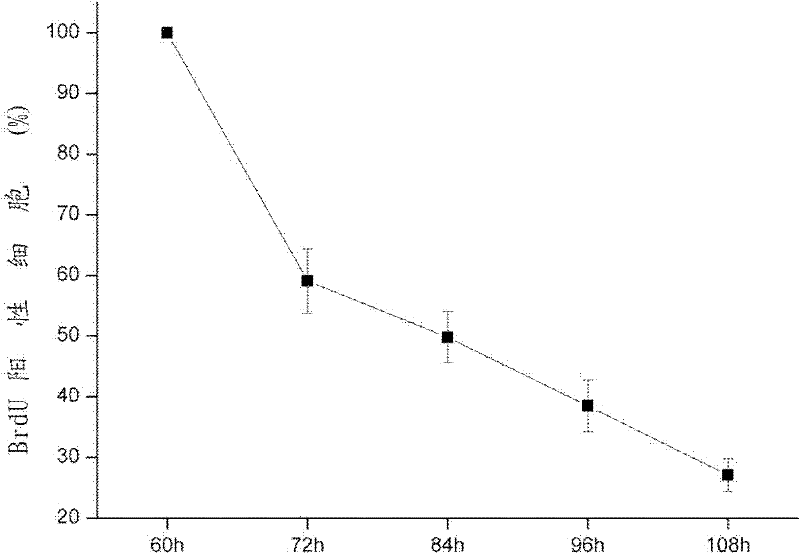Method for monitoring number of cell division, and application thereof
A technology of cell division and number of divisions, applied in biochemical equipment and methods, determination/inspection of microorganisms, etc., can solve the problems of large animals and time, inaccuracy, etc., to achieve the effect of simple operation, accurate and reliable results
- Summary
- Abstract
- Description
- Claims
- Application Information
AI Technical Summary
Problems solved by technology
Method used
Image
Examples
Embodiment 1
[0062] Embodiment 1, the method for monitoring the number of cell divisions in vitro
[0063] 1. Materials:
[0064] 1. BrdU (Sigma-Aldrich, St. Louis, MO)
[0065] 2. Mouse IgG against BrdU (Becton Dickinson, San Jose, CA)
[0066] 3. FITC-coupled donkey anti-mouse IgG (Jackson ImmunoResearch, West Grove, PA)
[0067] 4. DAPI (Sigma-Aldrich, St. Louis, MO)
[0068] 5. PI (Sigma-Aldrich, St. Louis, MO)
[0069] 6. o-Phenylenediamine (Sigma-Aldrich, St.Louis, MO)
[0070] 7. Dulbecco's modified Eagle's medium (DMEM, Gibco, Long Island, NY)
[0071] 8. Fetal Bovine Serum (Gibco, New Zealand)
[0072] 9. The CHO cell line was purchased from ATCC, the product catalog number is CCL-61.
[0073] 10. Paraformaldehyde (Sigma-Aldrich, St. Louis, MO)
[0074] 2. The theoretical number of divisions of CHO cells at each monitoring time point
[0075] The CHO cell cycle is about 12 hours; the total chromosome number of CHO cells is 19 (N=19).
[0076] The cells to be detected wer...
Embodiment 2
[0177] Embodiment 2, the method for monitoring the number of cell divisions in vivo
[0178] Material:
[0179] 1. BrdU (Sigma-Aldrich, St. Louis, MO)
[0180] 2. Mouse IgG against BrdU (Becton Dickinson, San Jose, CA)
[0181] 3. FITC-coupled donkey anti-mouse IgG (Jackson ImmunoResearch, West Grove, PA)
[0182] 4. DAPI (Sigma-Aldrich, St. Louis, MO)
[0183] 5. n-propyl gallate (Sigma-Aldrich, St.Louis, MO)
[0184] 6. SD strain rats (Vital River Laboratories, Beijing)
[0185] 7. Paraformaldehyde (Sigma-Aldrich, St. Louis, MO)
[0186] 8. Polylysine (Sigma-Aldrich, St. Louis, MO)
[0187] 9. Cryostat (Leica 3050S)
[0188]Liver regeneration background: It is known that almost all liver cells are in the non-proliferative quiescent state (G0 phase) of the cell cycle under normal conditions. Compensatory proliferation will start after liver resection. Liver regeneration in rats lasts for 7 days, and then the liver regenerates Returning to their pre-surgery weight, the...
PUM
 Login to View More
Login to View More Abstract
Description
Claims
Application Information
 Login to View More
Login to View More - R&D Engineer
- R&D Manager
- IP Professional
- Industry Leading Data Capabilities
- Powerful AI technology
- Patent DNA Extraction
Browse by: Latest US Patents, China's latest patents, Technical Efficacy Thesaurus, Application Domain, Technology Topic, Popular Technical Reports.
© 2024 PatSnap. All rights reserved.Legal|Privacy policy|Modern Slavery Act Transparency Statement|Sitemap|About US| Contact US: help@patsnap.com










